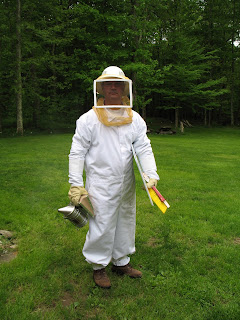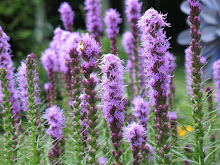
December 2009 - February 2009
Time for us to sit back, cross our fingers and pray that our bees make it through the winter months. Our work is done. In the winter bees form "clusters" that spread across several combs and are just under the stored food. Bees within the cluster generate heat by flexing their muscles, while cold, immobile bees on the outside of the cluster are periodically pushed to the center where they are warmed, rotating with the warm bees who are move to the outside. The temperature, at the center of the cluster will remain at approximately 93-95 degrees.
During warm weather periods the bees must break their cluster periodically and gorge on honey. It is this honey that provides the energy for warming the cluster interior. It is also necessary for the bees to take "cleansing" flights during the winter, as bees will not bathroom in the hive.
They will also tidy up and many older bees will be found dead outside the hive entrance.
On warm days you should see bees exiting and entering the hive, and if tapped on, your hives should give off a "BUZZ" sound.





















